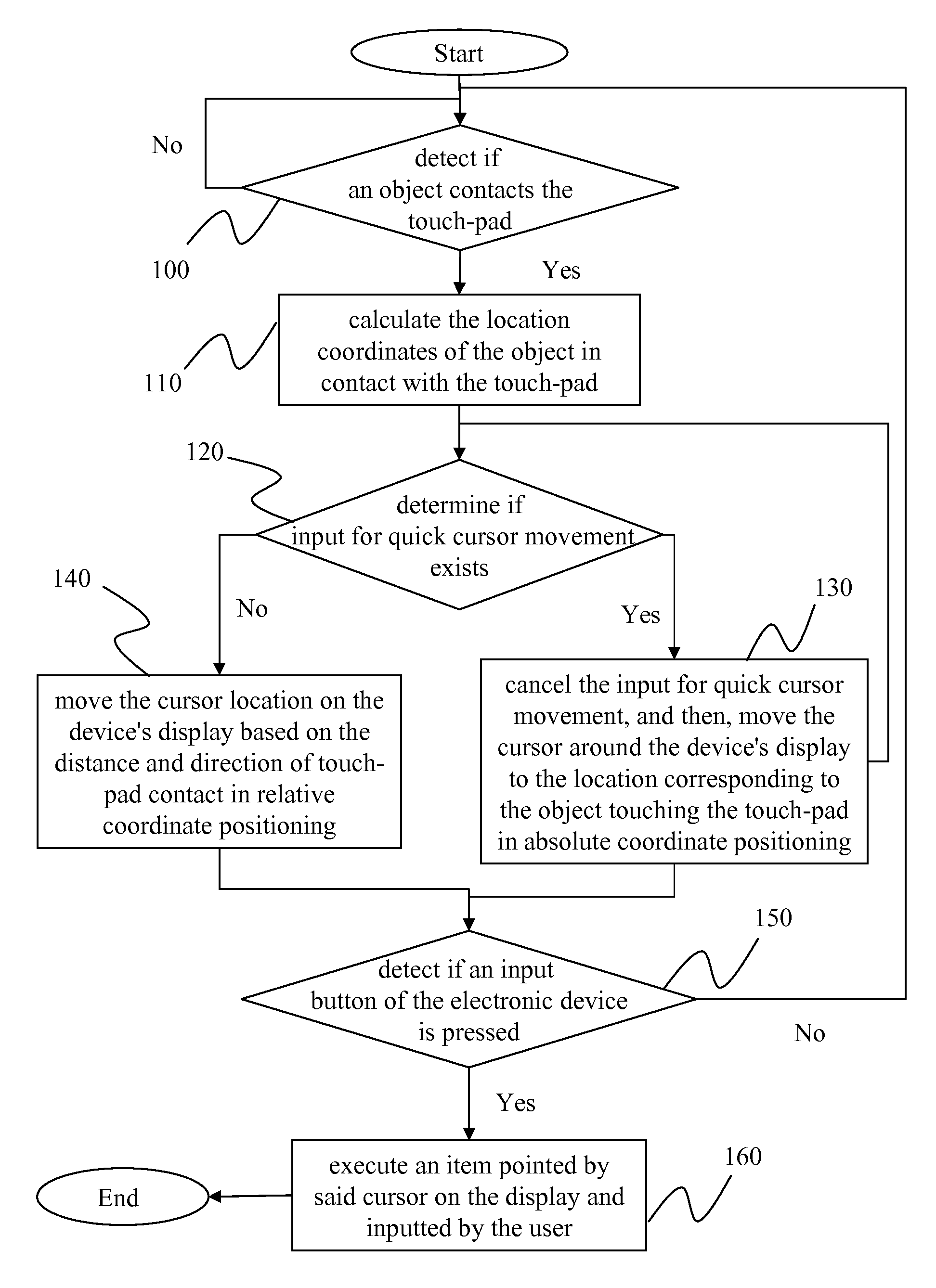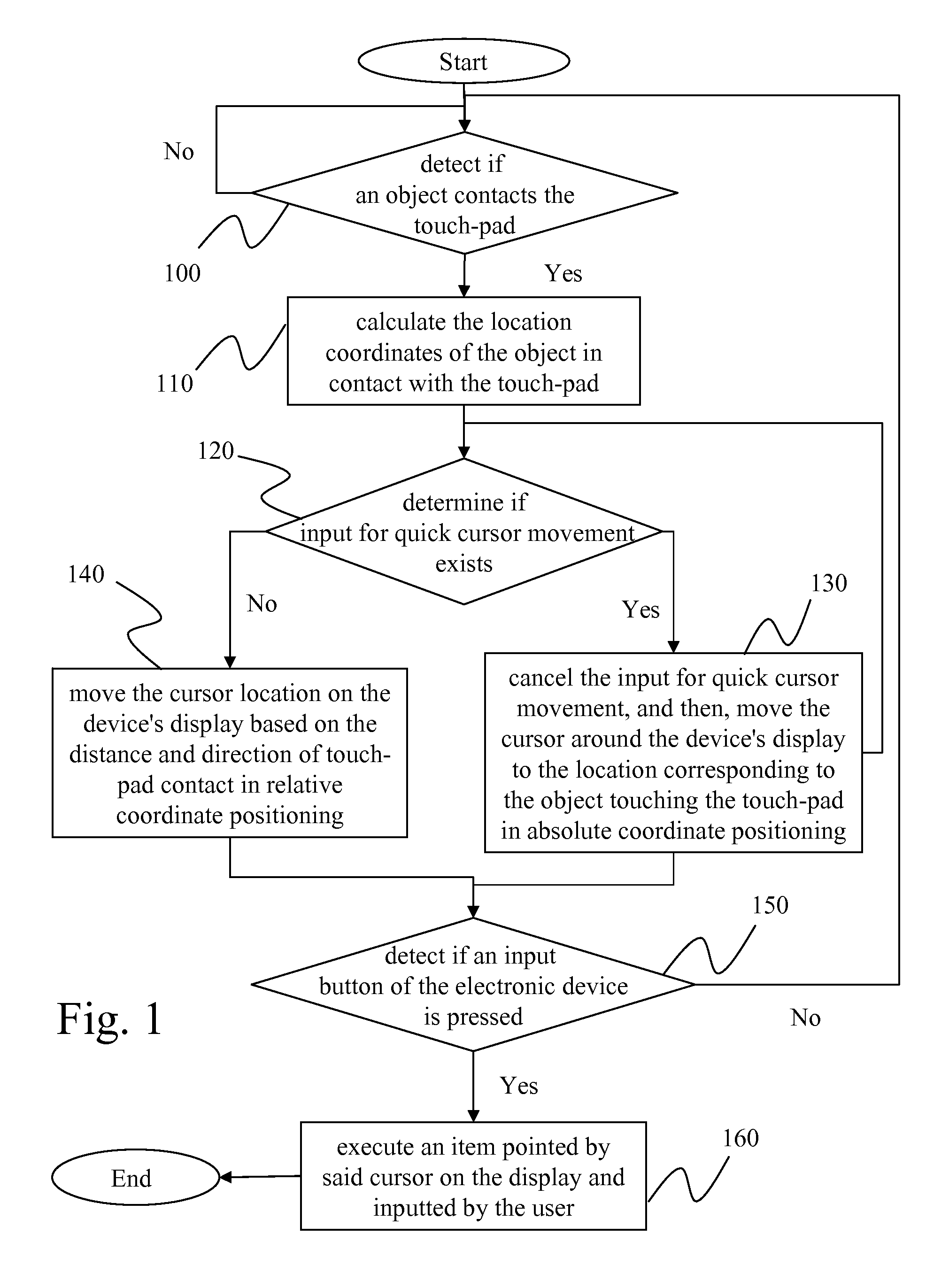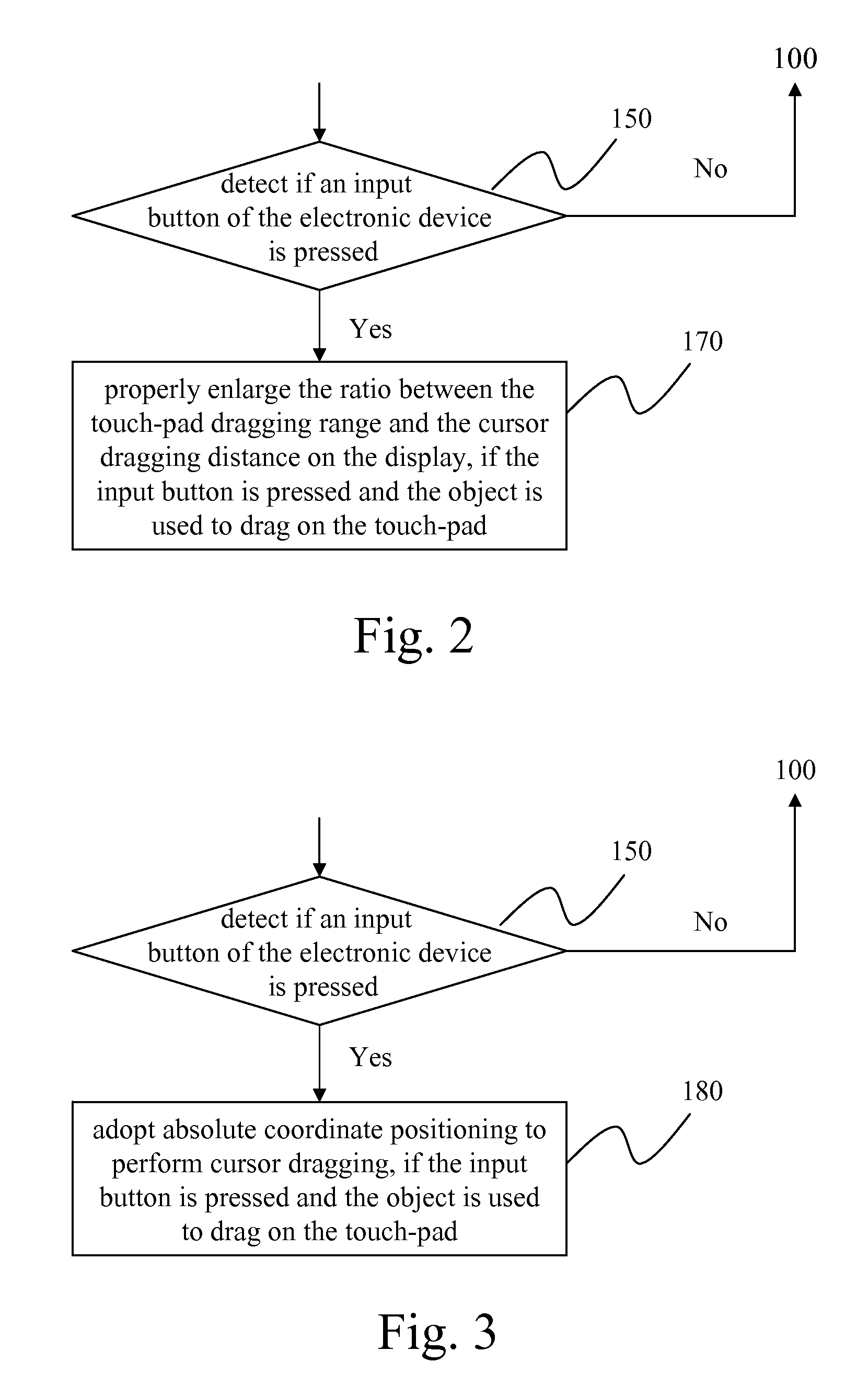Touch-pad cursor control method
- Summary
- Abstract
- Description
- Claims
- Application Information
AI Technical Summary
Benefits of technology
Problems solved by technology
Method used
Image
Examples
Embodiment Construction
[0030]The invention discloses a touch-pad cursor control method herein. Prior to introduction to the invention's method, the design and concept of the invention is described as follows. Generally, a user uses his / her finger or a touch pen to point on a touch panel product, the cursor is moved to relevant location on the display; whereas when a user uses his / her finger to move around the touch-pad, the cursor is then moved on the display. The invention is therefore applies the advantages of both touch panel screen and touch-pad to disclose a convenient method for users.
[0031]FIG. 1 is a flow chart of the invention's touch-pad cursor control method. The invention's touch pad is placed in an electronic device, (here, a notebook computer, but application is not limited to notebook computers, any kind of electronic device that allows data input could use it). The control method involves the following steps. The first step is to detect if an object is in contact with the touch-pad (Step 1...
PUM
 Login to View More
Login to View More Abstract
Description
Claims
Application Information
 Login to View More
Login to View More - R&D
- Intellectual Property
- Life Sciences
- Materials
- Tech Scout
- Unparalleled Data Quality
- Higher Quality Content
- 60% Fewer Hallucinations
Browse by: Latest US Patents, China's latest patents, Technical Efficacy Thesaurus, Application Domain, Technology Topic, Popular Technical Reports.
© 2025 PatSnap. All rights reserved.Legal|Privacy policy|Modern Slavery Act Transparency Statement|Sitemap|About US| Contact US: help@patsnap.com



